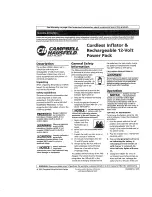
MT-30
Installation, Operation & Maintenance
06225-03H.doc
12 of 47
AeroVironment, Inc
the standby mode without affecting the other channel and is designed to be used
as part of an automated test setup.
Figure 2.5. MT-30 Connector Pinouts.
Pin 1 (+V) is a system-su5V isolated voltage source that must be
connected to Pin 2 (+sense). The Pin 3 (-sense) must be connected to Pin 4 (the
Gnd signal), which is the ground of the (+V) isolated supply. A break in either
one of these links will put that channel into the standby mode (opening the output
contactor and isolating the output of the MT-30 from the load).
RVS (Remote Voltage Sense)
To increase voltage accuracy at the Load, the MT-30 can feed back on a remote
voltage measurement. The RVS mode is activated by pushing the front panel
button, or via ROS GUI. The RVS feature can be used in voltage mode as well as
power mode. (See Appendix III for proper wiring and use of this feature.) In
current mode, the remotely measured voltage will be displayed once the RVS
mode is enabled.
2.1.4 Analog Signal Control
The MT-30 provides a method for modifying the commands sent from ROS with
an analog signal on either channel. This is controlled from the BNC connector
on the connector panel (Figure 2.4). (See Appendix IV for proper wiring and use
of this feature).
NOTE:
Analog Signal must be isolated for proper functioning of this feature.
2.1.5 Remote Emergency Stop (Optional)
Within the MT-30, there is a provision to allow installation of an external switch
to control the emergency stop function of the system. To enable a system
provided with this option, an electrical connection must be made between pins 1
and 4 of this interface (Figure 2.8). Opening this connection will induce a
complete power-down of the MT-30.
NOTE:
The base unit does not come with this feature.















































